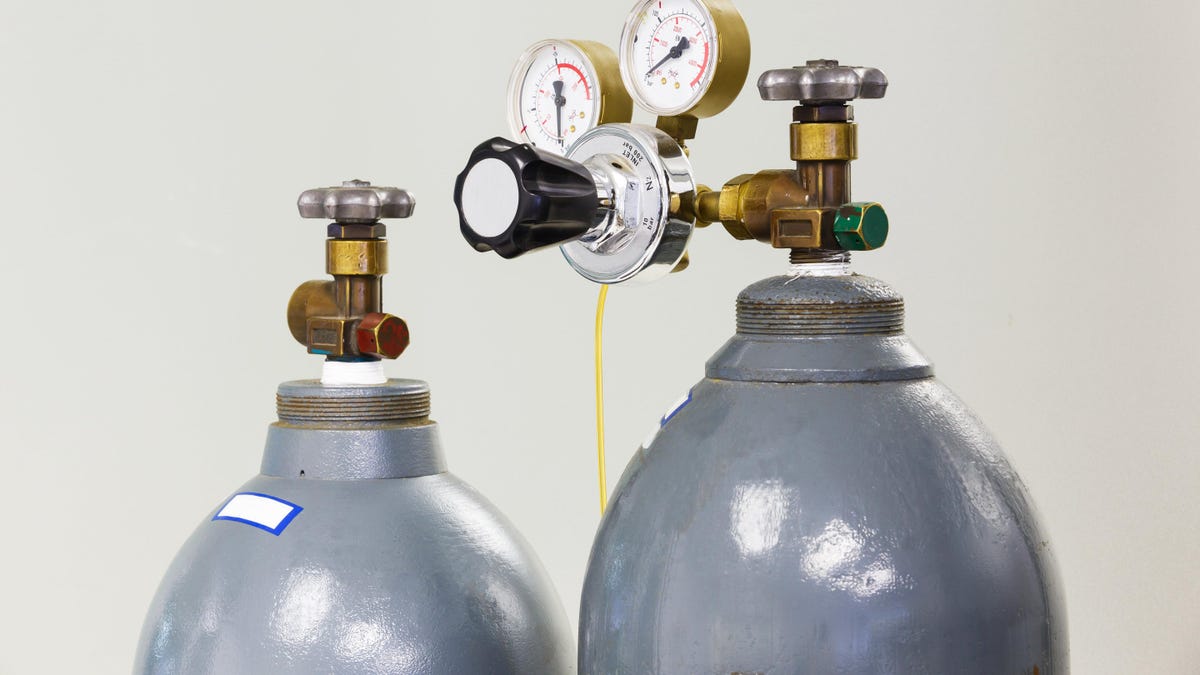The execution of inmate Kenneth Eugene Smith, set for later this month, would be the first ever to use nitrogen gas as its method of death.
A legal battle over how death row prisoners in Alabama can be killed has reached a critical point. On Wednesday, a federal judge ruled that the state can proceed with its planned execution of inmate Kenneth Eugene Smith using nitrogen gas. The execution is scheduled for later this month and would be the first ever to implement the colorless and odorless gas. But Smith’s lawyers have condemned the method as untested and potentially cruel and will likely appeal the decision.
The background behind this case is lengthy. For years, states that still practice capital punishment have struggled to secure legally approved drugs key to the most commonly used method of execution, the lethal injection. Much of this shortage has been rooted in the refusal of European-based drug manufacturers to continue selling these ingredients for executions, either of their own accord or under legal threat by countries where the death penalty is no longer carried out.
Faced with this lack of supply, states have tried to find workarounds. Some have controversially mixed alternative ingredients into their lethal drug cocktails, particularly the sedative midazolam. The use of midazolam has been tied to numerous botched executions, with inmates appearing to suffer greatly before dying, possibly because it isn’t reliable enough to completely anesthetize prisoners to the effects of the other drugs.
In 2015, Oklahoma became the first state to authorize the potential use of nitrogen gas for its executions, with Alabama and Mississippi having followed suit. But no state has attempted to go forward with such an execution until now.
Alabama released its protocol for how it would carry out nitrogen gas executions last year, following three botched lethal injection executions in 2022—one of them involving Kenneth Eugene Smith. The method uses a respirator placed over a person’s mouth and nose to replace their breathable air with nitrogen, eventually causing them to die from a lack of oxygen. In August, the state requested the Alabama Supreme Court to allow the execution of Smith via nitrogen, and in November, the Supreme Court gave its blessing.
Smith and his lawyers subsequently filed for an injunction in federal court to stop his execution, planned for January 25. They argued that the state is using him as a test subject for an experimental execution method with too many unknowns that would violate the constitutional ban on cruel and unusual punishment for prisoners—a sentiment backed by some medical and death penalty experts. The state has argued that Smith’s execution would be humane, since he would likely pass out within seconds and die within minutes, based on data from rare but fatal industrial accidents. U.S. District Judge R. Austin Huffaker ultimately sided with prosecutors and rejected the injunction.
Smith’s lawyers will almost certainly try to appeal the decision, and it’s possible that the U.S. Supreme Court will eventually have to step in and issue a final verdict on the legality of nitrogen gas for execution. Prison officials in Oklahoma have also stated that they’re keeping a close eye on the situation and could move forward with nitrogen gas executions in the future as well.
read more: https://gizmodo.com/alabama-nitrogen-gas-execution-death-penalty-smith-1851157118
Considering nitrogen asphyxiation is a well studied industrial hazard, and also used in the self-exit community, there’s lots of data on its mechanisms. So there’s not a lot of doubt about its efficaciousness and effects. Of the execution methods available, is probably one of the most painless ways to go.
One could imagine a more humane execution method where the death row cells are built into a self contained bowl type of room, and the nitrogen is introduced whole the subject is sleeping. That would remove the anxiety of anticipation.
But knowing the prison system, they would make it needlessly cruel. Extra tight facemasks strapped painfully on the face, count down, fully aware tied down to table/chair.
I don’t support the death penalty, but the point is vengeance. If the victims can’t even look them in the eyes, what’s the point? The data already shows it doesn’t deter crime anymore than life.
It’s not vengeance and that attitude is disgusting. Grow the fuck up.
Okay, so what’s the point of the death penalty then? Why do you think it exists?
The irredeemable or unforgivable, obviously.
That doesn’t mean it works in practice, but the idea is only vengence for disgusting people that want to add more negative things to the world.
The irony of arguing for the death penalty while taking the moral high road on “adding negative things the the world”… wow.
The irony of failing to realize what, “that doesn’t mean it works in practice” means.
Doesn’t work.
The french used that same reasoning to deport their hardened criminals to the French Guiane.
If they are irredeemable, put them away and let them waste away inside a system that will be a constant reminder they are at fault, they were put away by their own actions and attitude.
Killing them makes the system the same as them and puts blood on many peoples hands.
And you still wonder why your country is considered backwards.
Yes, notice how I specifically said, “doesn’t mean it works in practice”?
.
Your last meal would just be a huge pile of espresso beans?
This is the best summary I could come up with:
For years, states that still practice capital punishment have struggled to secure legally approved drugs key to the most commonly used method of execution, the lethal injection.
Much of this shortage has been rooted in the refusal of European-based drug manufacturers to continue selling these ingredients for executions, either of their own accord or under legal threat by countries where the death penalty is no longer carried out.
The use of midazolam has been tied to numerous botched executions, with inmates appearing to suffer greatly before dying, possibly because it isn’t reliable enough to completely anesthetize prisoners to the effects of the other drugs.
They argued that the state is using him as a test subject for an experimental execution method with too many unknowns that would violate the constitutional ban on cruel and unusual punishment for prisoners—a sentiment backed by some medical and death penalty experts.
The state has argued that Smith’s execution would be humane, since he would likely pass out within seconds and die within minutes, based on data from rare but fatal industrial accidents.
Smith’s lawyers will almost certainly try to appeal the decision, and it’s possible that the U.S. Supreme Court will eventually have to step in and issue a final verdict on the legality of nitrogen gas for execution.
The original article contains 613 words, the summary contains 214 words. Saved 65%. I’m a bot and I’m open source!
Oklahoma became the first state to authorize the potential use of nitrogen gas for its executions, with Alabama and Mississippi having followed suit
Top 3 asshole states in 1 sentence.
I don’t understand this sentiment. All states with death penalty are all equally pieces of smelly vile shit but Oklahoma, Alabama, and Mississippi slightly less smelly shits. IF you are insisting on putting someone to death than Nitrogen is the most humane, least likely to go wrong method.
I doubt humane and effective are their goals. We know how to humanely kill. Assisted suicides do not use nitrogen gas or lethal injection. We can put any animal to sleep, but as soon as we are talking about criminals it seems like there is a required minimum of suffering to satisfy those who support the death penalty.
That sounds like you’re disagreeing about the fact that inert gas asphyxiation is painless, because … it’s not used for pets? Why do you think that?





